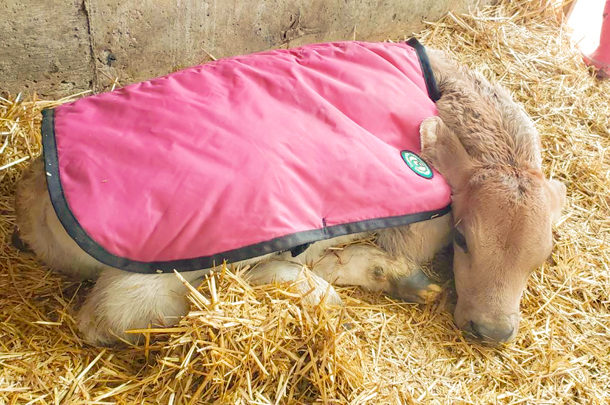Now I know, we've all seen a tiny little beef calf running around out on a pasture somewhere. There's snow all over the ground and it's way below freezing. And, that tiny little calf does just fine out there. So, why have calf jackets become so popular when we know calves can do well without them?
Coats, jackets, blankets – I have heard them called different things. And, I have seen many different varieties. Some have Velcro or clasps. Some are even homemade with baler twine. Some farms use them, and some farms don't. So, I'm here to answer the question: Do your calves really need coats in the wintertime?
The first part to the answer is understanding a calf's thermal neutral zone, or basically what temperature calves feel comfortable at. A newborn calf’s preferred temperature is 50º to 78°F. So, that means at any temperature under 50°F, calves can get chilly.
The second part to the answer is understanding what happens when calves get cold. When calves stay in their thermal neutral zone, they use all their nutrients to grow and build an immune system. But, when they get cold, they have to use those nutrients as energy to try to regulate their body temperature.
The final part to the answer is understanding the limits of a calf jacket. These are not miracle blankets. You can't slap one on a wet calf that didn't get colostrum, put it in a wet pen and expect a healthy calf. A calf with a tummy full of warm colostrum and a fluffy bed of straw can succeed just as well without a coat.
So, can a calf blanket really make a healthy calf? Do your calves really need them? The answer is, no. If your calf feeding program struggles in the winter, adding calf jackets to your newborns might be an option. But, they are certainly not a solution over a warm dry bed of straw and a nutrient-rich diet. But, I regularly use them anyhow, and many other farms do as well. Why do I do it? Because if a calf can use a little less energy fighting to stay warm and just focus on growing and staying healthy, I will gladly give her that tool.









